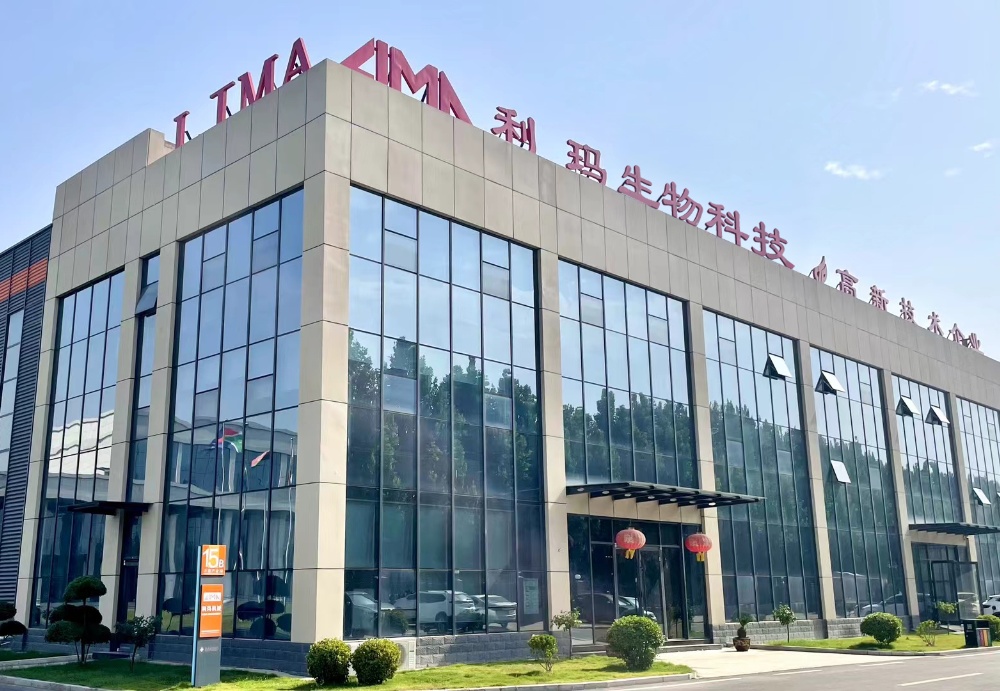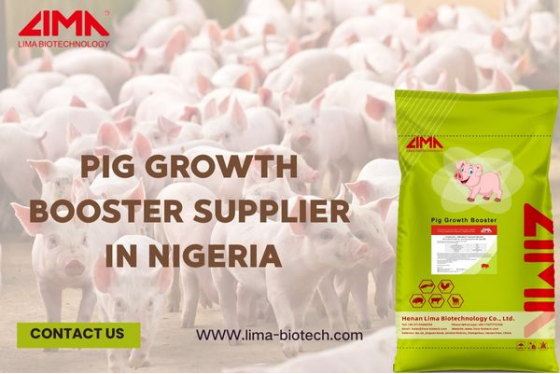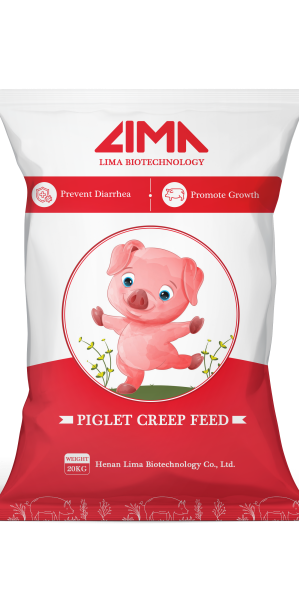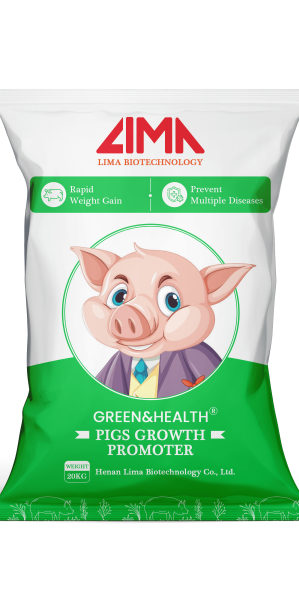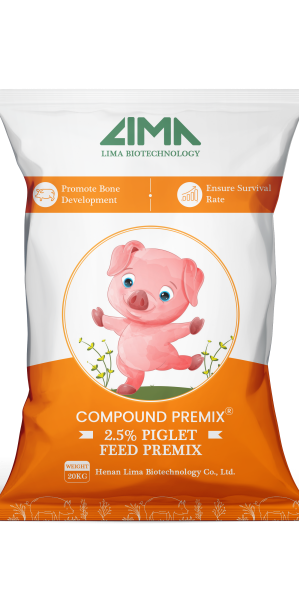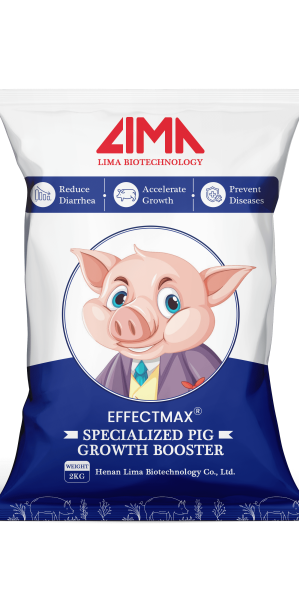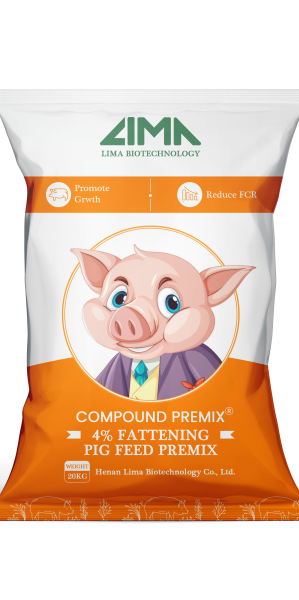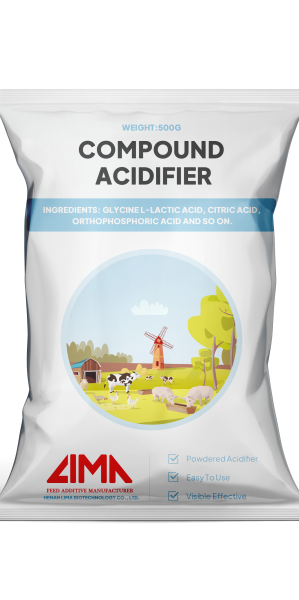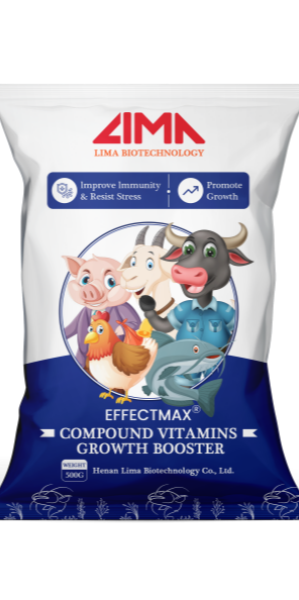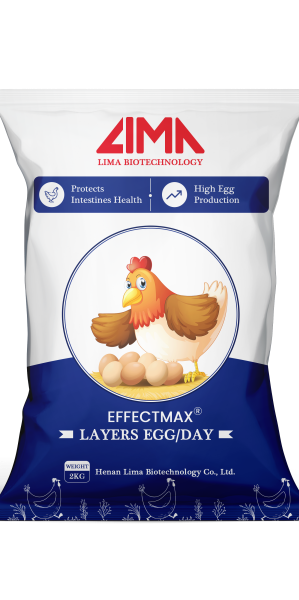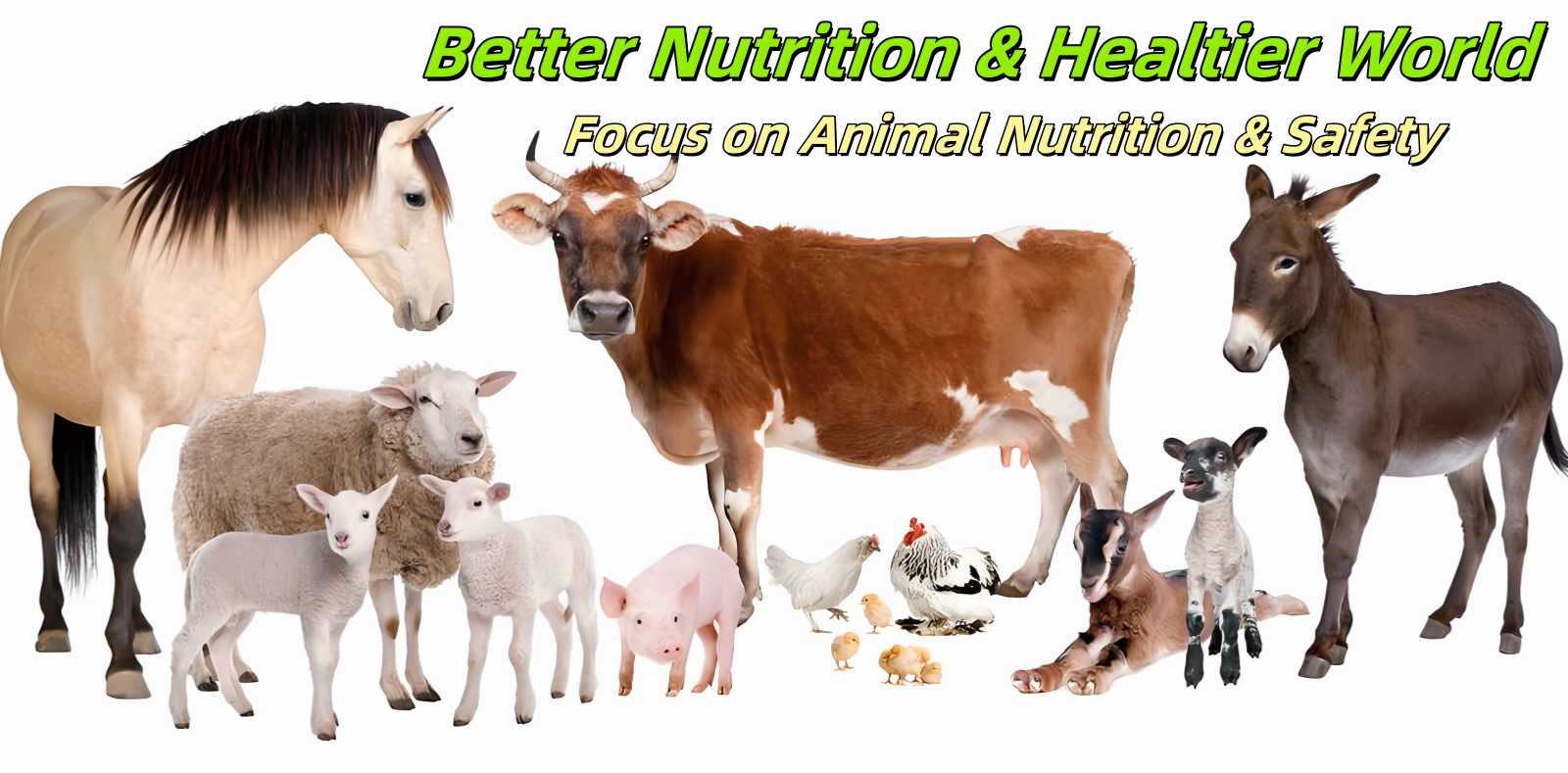What Is Pig Farming In Nigeria and Africa About?
Pig farming, simply put, is an industry that involves the artificial breeding, rearing, and management of pigs to achieve their growth and reproduction, ultimately bringing their products (such as pork, pigskin, and pig bristles) to market. In Nigeria and across Africa, pig farming is not only a vital component of traditional agriculture but also a key industry that adapts to modern market demands and promotes the diversification of the agricultural economy.
In terms of farming models, Nigeria's pig farming exhibits diverse characteristics. In rural areas, small-scale backyard farming is prevalent. Households typically raise a few pigs primarily for household self-sufficiency, selling surplus products at local markets. This model requires low investment and relatively simple techniques, effectively utilizing rural resources like crop straw and leftover grains as feed. In peri-urban and economically developed areas, large-scale, intensive pig farms are emerging. These facilities employ advanced equipment like automated feeding systems, environmental control systems, and manure treatment systems, alongside scientific management practices. This enables bulk production and high efficiency, meeting substantial market demand for pork products.
Within Africa, Nigeria's pig farming industry holds significant importance. With Africa's large population and continuously growing demand for meat products, pork—a nutrient-rich and relatively affordable meat—has gained widespread consumer preference. Leveraging its abundant agricultural resources, vast market potential, and evolving farming techniques, Nigeria has emerged as a major producer and consumer of pork within Africa. Simultaneously, Nigeria's pig farming sector actively collaborates and exchanges knowledge with other African nations, introducing advanced farming technologies and breeds to propel the development of pig farming across the entire continent.
Pig farming importance in Nigeria
Nigeria's pig farming industry holds irreplaceable importance for national economic development, food security, job creation, and rural revitalization, as demonstrated in the following aspects:
Driving Economic Growth and Increasing Foreign Exchange Earnings
Pig farming constitutes a vital component of Nigeria's agricultural sector, contributing significantly to the total agricultural output value. As the sector continues to develop, it not only meets domestic demand for pork products and reduces reliance on imports but also enables the processing and export of surplus pork to other countries and regions, generating substantial foreign exchange earnings for the nation. Statistics indicate that Nigeria's pork exports have shown steady growth in recent years, with markets spanning neighboring African nations and select European countries, making a positive contribution to national economic expansion.
Ensuring Food Security and Optimizing Dietary Structure
Pork serves as a high-quality protein source, rich in essential amino acids, vitamins, and minerals vital for human health. It plays a crucial role in improving dietary structures and enhancing public health standards. In Nigeria, rising population and increasing living standards have fueled growing demand for meat products. The development of the pig farming industry can provide sufficient pork supply to the population, alleviate the tight supply of meat products, and ensure national food security. Simultaneously, by rationally combining the consumption of pork with other agricultural products, it can further optimize the dietary structure of residents, improve their nutritional levels, and reduce various diseases caused by malnutrition.
Creating Employment Opportunities and Alleviating Employment Pressure
The pig farming industry features a long supply chain encompassing multiple segments—feed production, pig breeding, slaughtering and processing, product sales, and logistics transportation—each requiring substantial labor input. In Nigeria, rural areas harbor a large surplus labor force, and the development of pig farming can provide extensive employment opportunities for these surplus workers. Whether in small-scale rural backyard farms, large-scale pig farms, feed production enterprises, or slaughterhouses, the industry can absorb substantial numbers of workers. This effectively alleviates Nigeria's employment pressure and increases residents' income levels. According to incomplete statistics, Nigeria's pig farming industry and its related industrial chain create millions of jobs annually, making a significant contribution to the country's social stability.
Promoting Rural Revitalization and Narrowing the Urban-Rural Gap
Rural areas serve as the primary development zone for Nigeria's pig farming industry. Its growth drives related sectors in these regions, such as feed crop cultivation, agricultural product processing, and transportation, forming comprehensive industrial clusters that propel rural economic development. Simultaneously, the growth of pig farming can elevate rural residents' income levels, improve their living conditions, and stimulate the construction and enhancement of rural infrastructure, including road networks, electricity supply, and water management facilities. By developing the pig farming industry, Nigeria can effectively narrow the economic gap between urban and rural areas, achieve rural revitalization and development, and promote balanced economic growth nationwide.
Health Benefits of Pork
Pork, as one of the most common meats in people's daily diets, not only boasts a delicious flavor but also offers rich nutritional value, providing numerous health benefits for the human body, as detailed below:
(1) Supplying High-Quality Protein to Promote Physical Development
Protein is a vital component of human cells and tissues, playing a crucial role in growth and development, repairing damaged tissues, and enhancing immunity. Pork is rich in high-quality protein, whose amino acid profile closely matches the human body's requirements, making it easily digestible and absorbable. Whether for the growth and development of children and adolescents, the maintenance of normal physiological functions in adults, or the delay of bodily decline in the elderly, an adequate supply of high-quality protein is essential. Regular consumption of pork provides sufficient high-quality protein to meet the body's needs, promoting healthy development and normal bodily functions.
(2) Providing Multiple Vitamins to Maintain Physiological Balance
Pork contains various vitamins, including Vitamin B1 (thiamine), Vitamin B2 (riboflavin), Vitamin B6, Vitamin B12, and niacin. These B vitamins play crucial roles in human metabolism, participating in energy conversion and utilization while maintaining normal physiological functions of the nervous, digestive, and cardiovascular systems. For instance, vitamin B1 promotes carbohydrate metabolism, sustains normal nervous system function, and prevents beriberi. Vitamin B12 is essential for red blood cell production and nervous system health; deficiency may lead to megaloblastic anemia and neurological disorders. Additionally, pork contains small amounts of fat-soluble vitamins like Vitamin A and Vitamin D, which also play roles in maintaining normal vision and bone health.
(3) Rich in Minerals to Enhance Physical Function
Pork is abundant in minerals such as iron, zinc, selenium, phosphorus, and potassium. Iron is a vital component of hemoglobin, participating in oxygen transport and storage, and plays a significant role in preventing iron-deficiency anemia. The iron in pork is heme iron, which is easily absorbed and utilized by the body. Its absorption rate is significantly higher than that of non-heme iron found in plant-based foods, making pork consumption an excellent way to supplement iron. Zinc is a component and activator of numerous enzymes in the body, participating in growth and development, immune function, reproductive function, and other vital processes. It plays a crucial role in maintaining normal physiological functions. Selenium is a vital antioxidant that scavenges free radicals, protects cells from oxidative damage, boosts immunity, and helps prevent various diseases. Phosphorus and potassium are essential minerals for maintaining bone health and ensuring proper neuromuscular function.
(4) Providing Energy to Meet Daily Activity Needs
Pork contains a certain amount of fat, which serves as a vital energy source for the human body. It delivers substantial energy to support daily activities and physiological metabolism. Particularly during cold weather or intense physical labor, moderate pork consumption provides ample energy to help the body withstand the cold and maintain normal physiological functions. Additionally, the fat in pork promotes the absorption and utilization of fat-soluble vitamins (such as vitamins A, D, E, and K), enhancing their bioavailability. Of course, when consuming pork, it is important to choose cuts with moderate fat content and avoid excessive fat intake to prevent health issues like obesity and hyperlipidemia.
Requirements for pig farming in Nigeria
To establish a pig farming operation in Nigeria, a series of requirements must be met. These encompass multiple aspects including site selection, infrastructure development, equipment provision, personnel qualifications, financial preparation, and compliance with relevant policies and regulations. Only by fulfilling these requirements can the normal operation and sustainable development of the pig farm be ensured.
Site Selection
Site selection is the primary step in establishing a pig farm. An appropriate location provides an optimal environment for pig growth booster and development, reduces farming costs, and enhances overall efficiency. When selecting a site, the following factors should be considered:
1. Geographic Location: The farm should be situated in an area with convenient transportation to facilitate feed delivery, pig sales, and procurement of farming equipment and supplies. Simultaneously, the site should be distant from densely populated areas such as urban centers, residential zones, schools, and hospitals, as well as ecologically sensitive regions like drinking water sources, rivers, and lakes. This prevents manure, odors, and other byproducts from impacting the surrounding environment and residents' lives. Generally, the distance between a pig farm and residential areas should be no less than 500 meters, and no less than 1000 meters from drinking water sources.
2. Topography and Terrain: The site should be selected in an elevated, dry, flat area with good drainage, avoiding low-lying, damp, or waterlogged regions. Low-lying, damp environments foster bacteria, viruses, and parasites, increasing disease risks for pigs while complicating manure treatment and disposal. Additionally, relatively flat terrain facilitates farm layout planning, construction, and daily management, reducing earthwork costs.
3. Soil Conditions: Soil properties significantly impact farm construction and operations. Soil types with good aeration, moderate water retention, and high compressive strength—such as sandy loam or loam—should be selected. These soils support stable pig barn foundations, reducing issues like subsidence and deformation, while also facilitating drainage and landscaping. Avoid heavy, poorly aerated soils prone to compaction, as they impede drainage, promote site dampness, and increase farming risks.
4. Water Supply Conditions: Water is an indispensable resource for pig growth booster, development, and production. Therefore, the site should have access to an adequate, clean, and unpolluted water source nearby. Options include proximity to natural water sources like rivers, lakes, or reservoirs, or the extraction of groundwater. When selecting a water source, conduct water quality testing to ensure compliance with national drinking water hygiene standards and livestock drinking water quality standards. This prevents pig diseases or compromised pork product quality due to water issues.
Infrastructure Development
Infrastructure development is crucial for the farm's normal operations, primarily encompassing pig barn construction, feed storage warehouses, and manure treatment facilities.
1. Pig Barn Construction: Barns should be planned and designed according to the pigs' growth stages (e.g., piglets, finishing pigs, breeding stock), ensuring optimal ventilation, lighting, insulation, and thermal regulation. The building area should be determined based on the farm scale and stocking density. Generally, piglet stocking density is 10-15 pigs per square meter, finishing pigs 2-3 pigs per square meter, and breeding pigs 2-3 square meters per animal. The floor should be poured concrete, with a smooth, flat surface that facilitates cleaning and disinfection. Walls and roofs should utilize materials with good thermal insulation properties, such as brick walls or color-coated steel panels, to maintain a stable indoor environment. Additionally, the facility should be equipped with essential feeding equipment, including feed troughs, waterers, and pens, to facilitate feeding, drinking, and movement for the pigs.
2. Feed Storage Warehouse Construction: The feed storage warehouse should be constructed in a dry, well-ventilated location protected from moisture, insects, and rodents to ensure feed quality and safety. The warehouse's floor area should be determined based on the scale of the operation and the volume of feed to be stored, generally capable of holding enough feed for 3-6 months of use. The warehouse should be equipped with shelving, ventilation systems, and temperature control devices to facilitate the categorized storage, management, and preservation of feed. Additionally, feed storage warehouses should maintain a sufficient distance from pig barns to prevent contamination from pollutants within the barns.
3. Manure Treatment Facility Construction: Pig farms generate substantial amounts of manure during production. Improper handling can cause severe environmental pollution, necessitating comprehensive manure treatment facilities. Common methods include biogas digester processing, composting, and oxidation pond treatment. Biogas digester processing involves anaerobic digestion of pig manure.
Farming Equipment Configuration
Equipping farms with appropriate facilities is crucial for enhancing production efficiency and management standards. Key components include feeding systems, ventilation equipment, temperature control devices, cleaning and disinfection tools, and diagnostic/treatment equipment.
1. Feeding Equipment: Selection should be based on farm scale and management practices. Small-scale operations may employ manual feeding with basic feeders and drinkers. Large-scale farms should adopt automated feeding systems—such as feed lines, feed silos, and automatic feeders—to achieve automated feed transportation, distribution, and dispensing. This reduces labor costs, improves feeding efficiency, and ensures uniformity and accuracy in feeding.
2. Ventilation Equipment: Effective ventilation maintains fresh air in pigsties, reduces concentrations of harmful gases like ammonia and hydrogen sulfide, and inhibits bacterial/viral proliferation, creating optimal growth conditions. Key ventilation components include fans, ventilation windows, and water curtains. During hot summer months, fans and water curtains should be activated for cooling and ventilation. In cold winter seasons, ventilation rates should be appropriately controlled to maintain stable barn temperatures.
3. Temperature Control Equipment: Pig growth promoter and development require specific environmental temperatures, with optimal ranges varying by growth stage. Therefore, pig farms should be equipped with necessary temperature control devices, such as heaters, coolers, and temperature control instruments, to ensure stable temperatures within the pig barn. In winter, when the barn temperature falls below the optimal range for pigs, heaters should be activated for heating. In summer, when the barn temperature exceeds the optimal range, coolers should be activated for cooling.
4. Cleaning and Disinfection Equipment: Cleaning and disinfection are crucial measures for preventing pig diseases. Pig farms should be equipped with necessary cleaning and disinfection equipment, such as high-pressure washers, sprayers, and disinfection pools. Regular cleaning and disinfection of pigsties, feeding equipment, and premises effectively eliminate bacteria, viruses, and parasite eggs in the environment, reducing the risk of disease transmission.
5. Diagnostic and Treatment Equipment: To promptly detect and treat pig illnesses, farms should maintain essential diagnostic tools like thermometers, stethoscopes, syringes, and medication storage cabinets. Additionally, stock common veterinary pharmaceuticals such as vaccines and deworming medications to enable immediate diagnosis and treatment when disease symptoms appear.
Precisely Controlling Pig Barn Environments
Certain regions of Nigeria experience a tropical savanna climate, where hot and rainy seasons can lead to damp and stuffy conditions in pig barns, increasing disease transmission risks. Therefore, barn environments must be adjusted according to seasonal changes: During summer heatwaves, install shade nets on barn roofs, activate water curtains and fans, and maintain indoor temperatures between 22-28°C (72-82°F). During the rainy season, promptly clear drainage channels around the barn to prevent water backflow. Simultaneously, lay anti-slip mats or bedding material (such as sawdust or rice husks) on the barn floor to maintain dryness. In regions with colder winters, add insulation layers to barn walls and reduce ventilation to ensure the indoor temperature remains above 15°C, preventing frostbite or growth retardation in piglets due to low temperatures.
Scientific Feeding Plan Design
Adjusting feed formulations according to different growth stages is central to reducing farming costs and enhancing growth efficiency. For the piglet stage (0-2 months), feed a high-protein, easily digestible starter diet. Adding appropriate amounts of whey powder and probiotics to the feed promotes intestinal development and reduces diarrhea rates. During the finishing stage (3-6 months), increase the proportion of energy-rich feeds (such as corn and bran) while incorporating protein feeds like soybean meal to ensure average daily weight gain reaches 600-800 grams. For breeding sows, energy intake must be controlled to prevent obesity from impairing reproductive performance. Adding minerals like calcium and phosphorus to feed helps prevent osteoporosis. Additionally, feeding frequency should be consistent: 4-5 times daily for piglets, and 2-3 times daily for growing pigs and breeding sows. Portion sizes should allow pigs to finish feeding within 30 minutes to minimize waste.
Strengthening Disease Prevention Management
Nigeria's swine industry frequently faces challenges from diseases like African Swine Fever and swine diarrhea. Therefore, a disease prevention and control system centered on “prevention as the primary focus, with treatment as a supplement” must be established. First, strictly enforce disinfection protocols: Conduct comprehensive disinfection of both interior and exterior pig barns 1-2 times weekly using disinfectants such as glutaraldehyde or peracetic acid. All personnel and vehicles entering or exiting must pass through disinfection pools and ultraviolet disinfection chambers. Second, vaccinate on schedule: piglets should receive sequential vaccinations for classical swine fever, porcine reproductive and respiratory syndrome (PRRS), and foot-and-mouth disease after birth. Breeding sows require two booster vaccinations annually. Finally, promptly isolate sick pigs to prevent cross-infection. Mild illnesses may be alleviated by adjusting feed (e.g., adding antibiotic alternatives) and improving environmental conditions, while severe cases require professional veterinary diagnosis and treatment.
Focus on Breeding Stock Selection and Reproduction Management
High-quality breeding stock forms the foundation for enhancing farming profitability. Farmers should prioritize superior breeds like Duroc, Landrace, or Large White pigs, or develop locally adapted hybrids (e.g., Duroc crosses with local breeds). Such pigs typically exhibit rapid growth, strong disease resistance, and superior meat quality. For reproductive management, accurately identify sows' estrus cycles. Sows typically come into heat 3-7 days after weaning, identifiable by vulvar swelling and heightened behavioral activity. Timely mating is essential; artificial insemination improves conception rates. Sows should be housed individually during gestation to prevent crowding and collisions. Thoroughly disinfect farrowing pens one week before delivery. Assign dedicated personnel to monitor farrowing, assist piglets in consuming colostrum promptly, and improve piglet survival rates.
Proper Manure Management and Resource Recycling
Improperly managed manure from pig farming not only pollutes the environment but also breeds pathogens. Farmers can adopt a “biogas digester + composting” waste management model: Pig manure and urine are directed into biogas digesters. The resulting biogas can be used for lighting and cooking. Treated digestate (solid and liquid) serves as organic fertilizer for growing feed crops like corn and vegetables, creating a "livestock farming - manure - cultivation - feed" cycle. This approach reduces environmental pollution while lowering feed procurement costs. Additionally, regularly cleaning manure from pigsties maintains fresh indoor air, reduces concentrations of harmful gases like ammonia, and improves the growth environment for the pig herd.
The Rearing & Breeding Seasons For Pigs In Nigeria and Africa
For pig farming operations in Nigeria and Africa, mastering the optimal seasons for rearing and breeding pigs is crucial for ensuring profitability and achieving sustainable production. As highly prolific animals with the characteristic of producing multiple offspring per litter, pigs are favored by farmers of all scales.
Regarding breeding seasons, pig reproduction in Nigeria and Africa typically peaks in November and extends through January or February of the following year. This period offers relatively favorable climatic conditions, with environmental factors like temperature and humidity better supporting sow estrus, conception, and subsequent piglet survival. However, advancements in farming techniques and improved facilities—such as artificially regulating environmental conditions like temperature and lighting in pigsties—have enabled many large-scale farms to overcome traditional breeding season constraints. They now achieve year-round reproduction, ensuring continuous piglet supply to meet sustained market demand for pork products.
The farming season may vary depending on specific production models and management practices. Most farmers aim to raise pigs to market-ready weight, typically requiring 6 to 8 months. Throughout this cycle, farmers must provide balanced, high-quality feed, ample clean water, and necessary nutritional supplements to ensure healthy growth. They also need to closely monitor growth progress, regularly check mental state, appetite, and fecal conditions to promptly identify and address potential diseases or health issues. For instance, during hot seasons, pig barns must be cooled and ventilated to prevent heatstroke. In cold seasons, insulation measures should be strengthened to avoid slowed growth or illness caused by low temperatures.
Furthermore, the timing of management practices like breeding and feeding significantly impacts a pig farm's operational success. Strategically scheduling sow breeding ensures piglets are born during optimal seasons, improving survival rates and growth velocity. Developing scientific feeding plans—adjusting feed formulations and rations according to nutritional needs at different growth stages—enhances feed efficiency and reduces production costs. Implementing timely disease prevention measures, such as regular vaccinations and thorough barn sanitation, minimizes illness outbreaks and maintains herd health and stability.
Pig Farming Areas in Nigeria
Nigeria's vast territory exhibits significant regional variations in climate, soil conditions, and transportation infrastructure. Selecting suitable farming zones can mitigate operational risks and enhance efficiency.
Northern Region: Potential for Large-Scale Operations
Northern Nigeria (e.g., Kano State, Kaduna State) features a tropical savanna climate with moderate annual rainfall and flat terrain, making it ideal for establishing large-scale pig farms. The region boasts developed agriculture with high yields of feed crops like maize and sorghum, reducing feed transportation costs. Additionally, major northern cities (e.g., Kano City) serve as regional commercial hubs with convenient transportation networks, facilitating the distribution of pork products to surrounding markets and exports to neighboring countries like Niger. However, winter temperatures in the north are relatively low, requiring attention to pig barn insulation. Furthermore, religious beliefs in some areas restrict pork consumption, necessitating that farmers conduct advance research on local market demand. Prioritizing large-scale farming targeting southern consumer markets is advisable.
Southern Region: Core Area for Consumption-Driven Farming
The southern region (Lagos State, Ogun State, Rivers State) is Nigeria's most densely populated and economically developed area, featuring robust pork consumption demand. It serves as the core zone for consumption-driven pig farming. Lagos State, Nigeria's largest city with over 20 million residents, exhibits substantial demand for fresh pork and processed products (e.g., sausages, ham). Its well-developed transportation network and port facilities facilitate importing farming equipment and exporting pork products. Adjacent to Lagos, Ogun State offers lower land costs, making it suitable for establishing small-to-medium-sized pig farms that supply fresh pork to the Lagos market. The southern region experiences prolonged rainy seasons, necessitating enhanced drainage and moisture-proofing in pig barns. Disease prevention and control must also be prioritized to avoid outbreaks triggered by high temperatures and humidity.
Central Region: Comprehensive Advantage Farming Zone
The Central Region (Federal Capital Territory of Abuja, Niger State) combines the raw material advantages of the North with the market advantages of the South, forming a comprehensive advantage farming zone. As the capital, Abuja has significant demand for high-quality pork. The concentration of government institutions facilitates access to policy support and veterinary services. Niger State boasts abundant agricultural resources and ample feed supply, with proximity to both northern and southern markets reducing transportation distances and costs. Its temperate climate with distinct seasons suits diverse pig breeds, allowing farmers to flexibly scale operations based on market demand—supplying premium pork to Abuja while distributing standard pork products to northern and southern markets.
Eastern Region: Specialized Breeding Potential Zone
The Eastern Region (Imo and Anambra States), primarily focused on agriculture and commerce, exhibits traditional fresh pork consumption patterns, positioning it as a potential area for specialty farming. With a large rural population and widespread small-scale backyard farming, producers can leverage local agricultural resources through integrated “pig-to-grain” circular farming systems to reduce costs. Additionally, the region's proximity to countries like Cameroon offers opportunities to explore cross-border pork trade. However, transportation infrastructure remains relatively underdeveloped in parts of the East Region. Improvements are needed to ensure timely delivery of pork products to markets. Furthermore, technical training for small-scale farmers must be strengthened to enhance the standardization of farming practices.
Lima Biotech Pig Growth Booster in Nigeria
In Nigeria's swine industry, feed additives serve as essential supplementary products for enhancing herd growth efficiency and improving health outcomes. Lima Biotech Green&Health® Pig Growth Enhancer, with its natural ingredients, scientific formulation, and proven efficacy, has become the preferred choice among local farmers. Easy to store and transport, it is suitable for all growth stages—including piglets, finishing pigs, and breeding stock—and allows flexible dosage adjustments based on herd health conditions, providing an efficient nutritional solution for Nigeria's pig farming industry.
Why use Lima Biotech Pig Growth Promoter?
Lima Biotech Pig growth promoter effectively addresses challenges in Nigerian pig farming—such as slow growth, frequent diseases, and low reproduction rates—through its multifaceted advantages.
(1) Significantly Promotes Weight Gain and Shortens Market-Ready Period
Its probiotics, amino acids, and vitamins optimize intestinal digestion and absorption, enhancing feed conversion rates. When used for finishing pigs, it achieves an additional weight gain of 10-15kg throughout the entire growth period. Pigs reach market weight (typically 110-120kg) approximately 15 days earlier, significantly shortening the farming cycle, reducing costs, and helping farmers recover capital faster.
(2) Improves piglet survival rates, safeguarding the breeding foundation
Addressing piglets' low immunity and susceptibility to diarrhea, the product improves intestinal microecological balance, strengthens resistance, and reduces disease incidence in newborns. Simultaneously, it stimulates appetite and increases feed intake. From initial feeding to the end of nursery phase, piglets gain at least an additional 1.5kg, laying a solid foundation for the subsequent fattening stage and significantly boosting survival rates (up to 95% or higher).
(3) Regulating the Reproductive System of Sows to Enhance Breeding Efficiency
For breeding stock, the product delivers multiple benefits: it promotes earlier estrus in sows, shortens the estrus interval, and ensures timely mating. It also reduces farrowing duration, lowers dystocia risks, and increases milk production to provide ample nourishment for piglets. Additionally, the product increases litter size per farrowing (by an average of 1-2 piglets) and extends the reproductive lifespan of sows, thereby boosting the economic efficiency of breeding operations.
(4) Effectively controls diarrhea and improves intestinal health
Probiotic components (such as lactic acid bacteria and Bacillus species) in the product colonize the pig gut, suppressing harmful bacteria (e.g., E. coli, Salmonella) and maintaining intestinal microecological balance. This fundamentally prevents diarrhea (especially post-weaning diarrhea in piglets). Simultaneously, probiotics promote intestinal motility, improve digestive function, reduce incidence of intestinal diseases, and lower veterinary medication costs.
(5) Enhancing Immune Function and Reducing Disease Risk
The product contains amino acids (such as lysine and methionine), vitamins (such as Vitamin A and Vitamin E), and minerals (such as zinc and selenium)—all essential nutrients for pigs. These components participate in the synthesis of immune cells, enhancing the overall immunity of the herd. After use, the herd's resistance to common diseases like respiratory infections and mastitis is significantly strengthened, reducing disease outbreaks and preventing economic losses caused by large-scale epidemics.
(6) Enhancing Body Conformation and Pork Quality
By optimizing nutrient absorption and promoting muscle growth, the product improves body conformation, resulting in fuller back muscles and more uniform body shapes that meet market demands for premium pork. As a natural feed additive free of prohibited substances, it ensures pork is free from drug residues and delivers tender, flavorful meat that satisfies consumer food safety expectations, thereby boosting product competitiveness.
(7) Reducing Feed Waste and Lowering Farming Costs
The product enhances feed digestion and absorption rates in pig herds, reducing undigested feed excretion and lowering feed waste rates (by 10%-15%). For farmers, this means higher weight gain per unit of feed input, effectively reducing feed costs per unit of weight gain and increasing farming profit margins.
(8) Reduces Ammonia Concentration in Barns, Improves Farming Environment
Undigested proteins in pig manure readily produce harmful gases like ammonia, leading to poor barn air quality and compromising herd health. The product improves intestinal digestion, reducing protein residues in manure. This lowers ammonia and other odor concentrations in barns, enhances the farming environment, reduces respiratory disease incidence, and simultaneously lowers environmental management costs.
(IX) Broad applicability with flexible, convenient usage
Suitable for all growth stages—including piglets, finishing pigs, and breeding stock—the product features simple application: For routine health maintenance, add at a 2% ratio to feed long-term. During poor health conditions (e.g., diarrhea, respiratory diseases), increase the addition ratio to 4% for rapid symptom relief. Requiring no complex procedures, it facilitates daily management and emergency use by farmers.
(10) Natural and Safe Ingredients, Compliant with Industry Standards
Formulated with scientifically balanced plant powders, complex vitamins, trace elements, and beneficial bacteria, produced via innovative fermentation technology. Contains only natural ingredients—free from chemical hormones and banned substances—meeting Nigerian and international feed additive standards. Use poses no health risks to pigs and leaves no residues in pork, making it safe for large-scale operations and export-oriented pig farming.
Lima Animal Feed Additives Warehouse in Nigeria
To ensure Nigerian livestock farmers have timely access to Lima Biotech's swine growth promoters and other feed additive products, Lima Biotech has established specialized warehouses in Nigeria's primary livestock regions, building a comprehensive storage and distribution system. Warehouse locations were selected with full consideration of transportation accessibility and market coverage.
1. Nigeria: 3 km after Shagamu Interchange, Lagos to Ibadan Expressway, Win-Win Industrial Park, Shagamu, Ogun State, Lagos, Nigeria
2. Kano Store Address: No. 6 Yoruba Road by Ibadan Road, Kano State.
3. Address: Abbatoir Market, Old Abeokuta Road, Pencinema, Agege, Lagos State.
Additionally, warehouses are staffed with technical experts who provide on-site guidance on product usage and farming techniques to visiting farmers. This support ensures proper product application and maximizes effectiveness.
Conclusion
Nigeria's pig farming industry, as a high-potential sector within agriculture, offers vast development opportunities for investors and farmers due to substantial market demand, high pig reproduction rates, and policy support. From an industry foundation perspective, pork—the world's most consumed meat—serves not only as a vital protein source in Nigeria but also generates additional revenue through value-added processing and exports. From a farming practice standpoint, selecting suitable regions and mastering scientific farming techniques can effectively reduce risks and enhance profitability.
- About Lima Biotech
- Careers-Lima Biotech
- Code of Conduct-Lima Biotech
- Conditions of Sale-Lima Biotech
- Contact-Lima Biotech
- Cookies Policy-Lima Biotech
- Find Agent-Lima Biotech
- Global Warehouses
- Investor Relations-Lima Biotech
- Legal Information-Lima Biotech
- Privacy Policy-Lima Biotech
- Success-Lima Biotech
- Sustainability-Lima Biotech
- World Class Manufacturing-Lima Biotech













